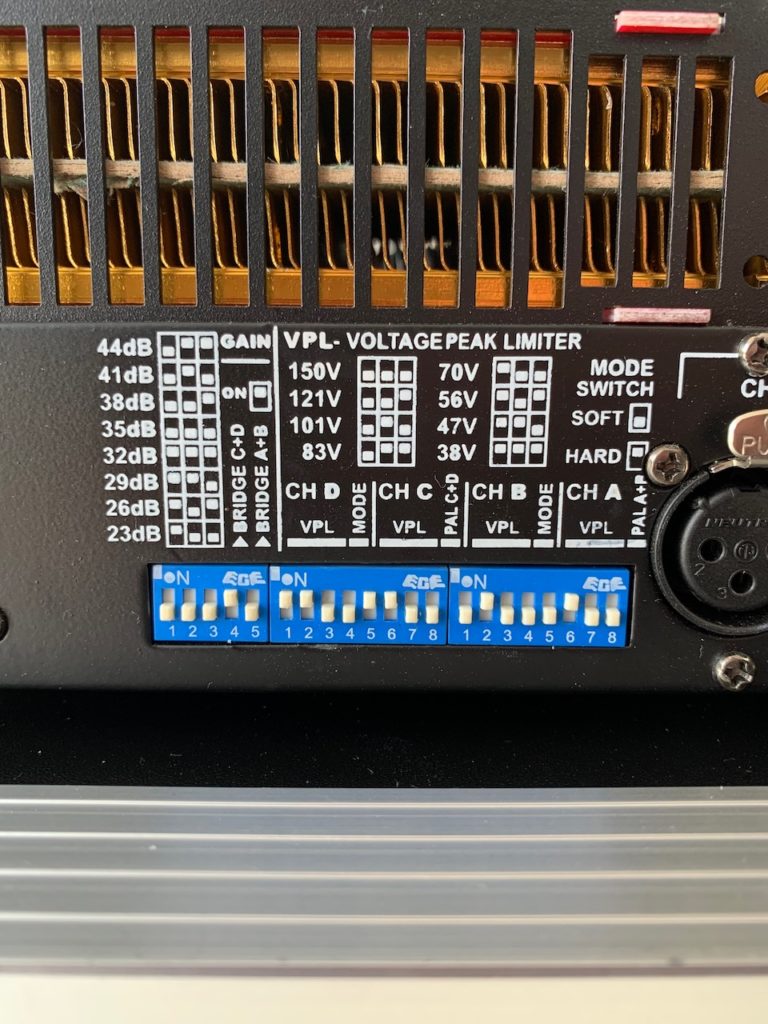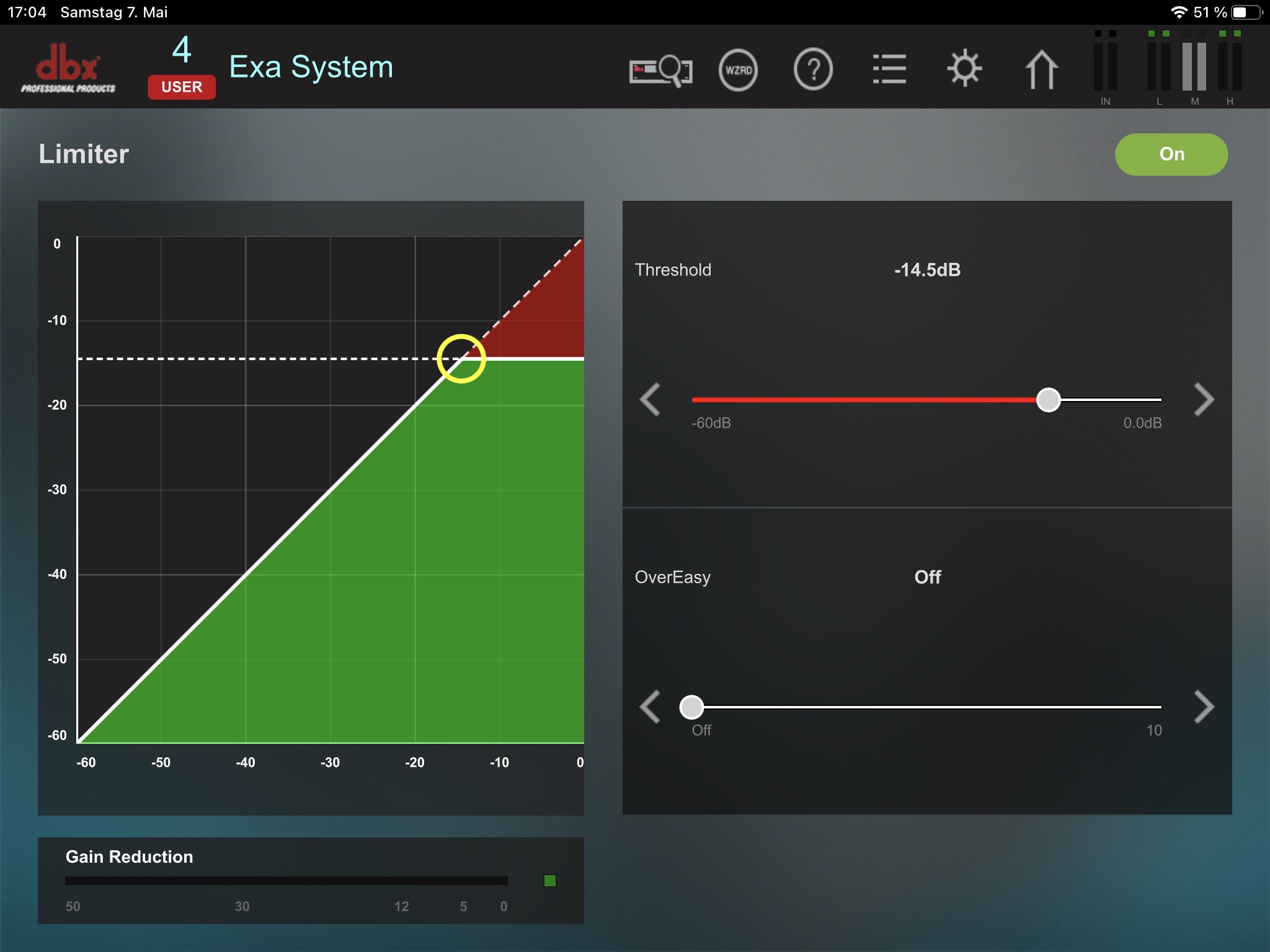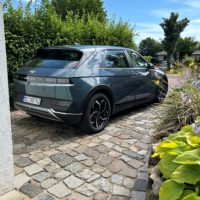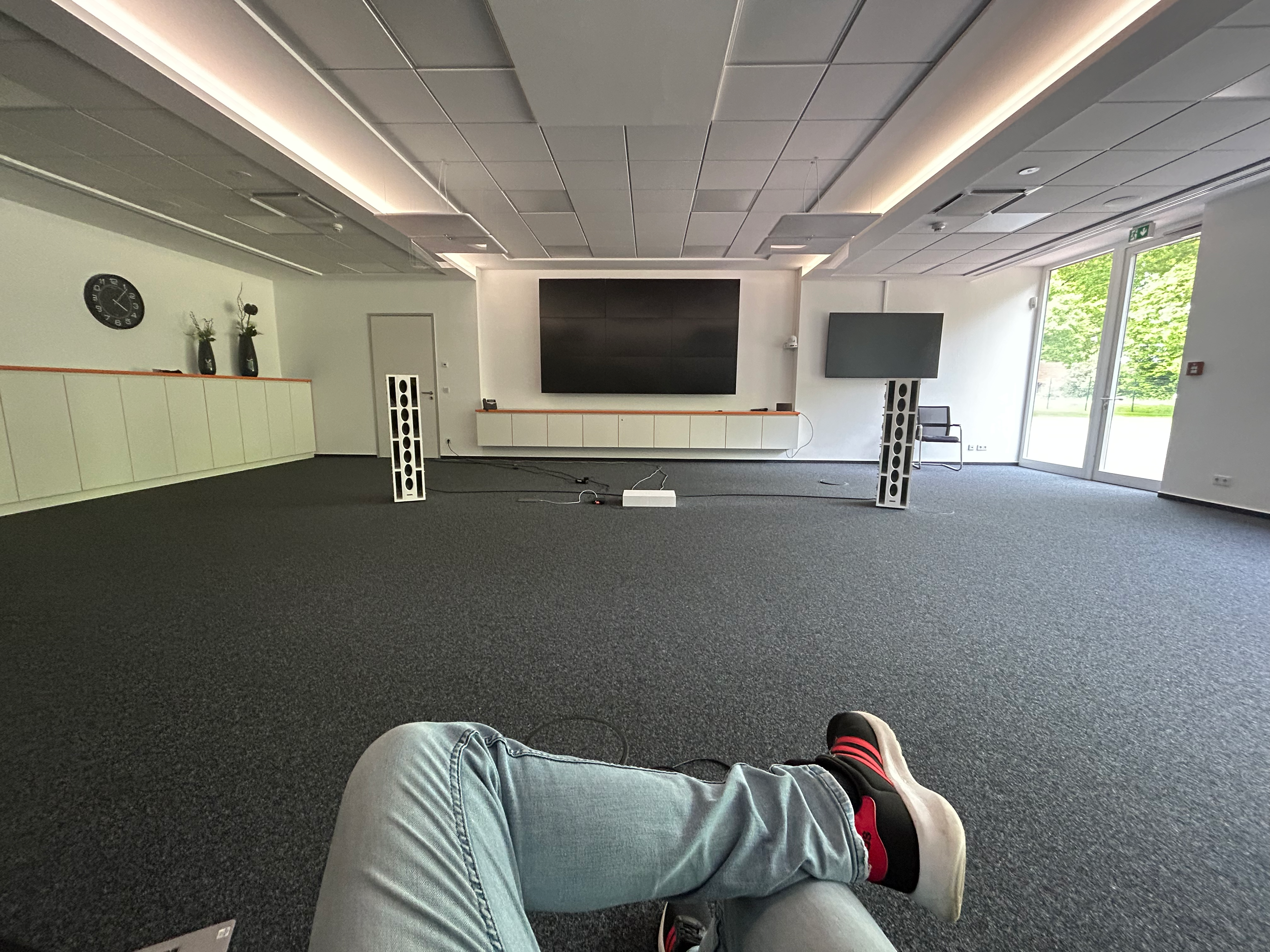My controllers settings – Part 2
In my last post I only talked about the crossover itself, which required more attention than I originally thought. That’s why I dedicated a separate chapter to the controllers limiter settings here.
Excerpt: Voltage Gain
First of all, I discovered that the 44dB voltage gain of my amplifier was causing some really strange behavior. At some point, the protection circuit kicked in and turned the amplifier off and on several times. I couldn’t find any other problem, so I tried resetting the amplifier to the factory setting, which is 35dB. Maybe I’ll expand on my troubleshooting story a bit more at some point, but let’s leave it like that for now.
Normally the voltage gain is a fixed value and can’t be changed, but my amp has some switches on the back to adjust it to your needs.
The required voltage gain depends strongly on your other used equipment. Of course, after this change, I also had to rebuild the gain structure.

Limiters
First of all, I used a different approach for my limiter calculation than originally planned. I calculated here with +20% of the RMS power, because my kind of music has a rather low crest factor. I don’t dare to use double the RMS power for the controllers limiter settings calculation.
Maybe I will try +30% or +40% in the future, but let’s just start with that, since it’s already more than loud enough for my parents’ basement. 😄
📝 Note: If you don’t know how to calculate a limiter, have a look at my how-to post.
Subwoofers

My two subwoofers are connected in parallel to the bridged C+D output of the amplifier. The parallel connection reduces their nominal impedance from 8 to 4 ohms. Furthermore, their RMS power is summed up to 1400W.
With my +20% boost I calculated 1680W at 4 ohms giving 81.98V which we should not exceed in the long term. After some dBu magic and a comparison to my amplifier voltage gain I figured out -14.51dBfs I need to set here.
Tops

The tops run with their nominal 8 ohms impedance at the two separate amplifier channels A and B. Their RMS power is 400W.
If we add +20% here as well, we get a tremendously high 480W per speaker (wow!). At 8 ohms we should reach a maximum of 61.97V continuous. If you convert this to dBu and have a look at the voltage gain, you get the stated -16.94dBfs.
Bonus content
After I re-set my limiter with the new voltage gain, I also did a new listening test at the highest volume. Note that we are running the system at RMS+20% here. As mentioned earlier, that’s more than enough ground shaking experience for my parents’ basement. 😂
But we could go even higher if I raise the limiter even more, maybe to +40 or +50%. 😌




